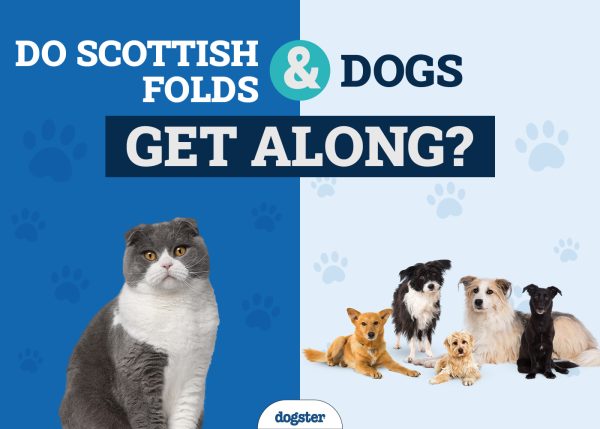In this article
If your dog has eaten an ink pen, you should contact your veterinarian immediately. Ingestion of any non-food objects can lead to obstructions and be detrimental to the health of your dog, so you shouldn’t hesitate in seeking care.
It can sometimes be difficult to know how much of a strange object your pet has eaten, as you might only see its remnants on the floor. However, since humans don’t have X-ray vision, it is better to be safe than sorry and go to the vet’s office. Take all the “evidence” with you so your veterinarian can see exactly what they ate and decide on treatment from there.

Is Pen Ink Poisonous to Dogs?
Ink is dye mixed with a base solvent of water or oil, such as benzyl alcohol. Ink consumed in small amounts, such as what’s an ordinary ballpoint pen, is unlikely to be toxic to a dog. While they may get a stained tongue, throat, and fur, they probably won’t become ill from it.
What is more of a concern is the plastic encasing of the pen. Dogs are infamous for eating things that they shouldn’t, and sometimes these objects pass through the intestines without a problem. However, in other cases, they don’t.

What Happens if My Dog Eats Plastic?
Plastic, whether swallowed whole or chewed into small pieces, can become stuck in a dog’s stomach and intestines. This causes a blockage and prevents digesta from passing through the gastrointestinal tract. Once obstructed, it only takes a small amount of time for the affected part of the intestines to deteriorate and quickly become toxic to the body, causing severe illness. This can be fatal without appropriate veterinary attention.
If you suspect your pet ate plastic, we suggest you speak to a vet immediately.
If you need to speak with a vet but can't get to one, head over to PangoVet. It's our online service where you can talk to a vet online and get the advice you need for your pet — all at an affordable price!
What Are the Signs of an Obstruction?
- Vomiting
- Inappetence
- Diarrhea
- Bloating
- Abdominal pain
- Lethargy
- Dehydration (sunken eyes and skin tenting)
- Constipation
- Whining
- Restlessness

How Is an Obstruction Treated?
Your vet will usually perform diagnostic tests to determine whether your dog has an obstruction. This includes bloodwork and diagnostic imaging, such as X-rays and an abdominal ultrasound. While the vet might not be able to clearly see the object that is blocking the intestine, there will be certain markers that arouse suspicion. Sometimes, it can also be felt on palpation of the abdomen.
Where the object is will affect the treatment. If the plastic is in the stomach and an endoscope is available (a camera that can be passed down the throat into the stomach), the plastic may be able to be removed via endoscopy under sedation or anesthesia. If the plastic has already made it down to the large bowel or colon, the patient will be supported in letting the plastic pass on its own. However, if the plastic is suspected to be in the small intestine, surgery is required. In most cases, surgery is the most common treatment.
Intestinal surgery is a major abdominal procedure. It usually requires several days of hospitalization and approximately 2 weeks of recovery. During the procedure, the veterinary surgeon will cut into the intestine to manually remove the object(s) and repair any damaged intestine around it. The outcome is usually better the earlier your dog is treated. If you suspect that your dog has ingested something that they shouldn’t, it’s always best to get them assessed, especially if they are showing signs of illness.

What Do I Do if I’m Not Sure That My Dog Ate a Pen?
It’s always better to be safe than sorry, and if you’re uncertain whether your dog has swallowed any bits of plastic, a phone call to your veterinarian for advice is recommended.
Otherwise, monitoring for signs of digestive obstruction is vital. If you notice any changes to your dog, go to your vet as soon as possible.
Summing Up
It is a truth universally acknowledged that a dog with the right opportunity will eat something that they shouldn’t! If they have a certain predilection towards stationery and you find the carcass of an ink pen as evidence of their transgression, please call your veterinarian immediately. Otherwise, make sure to keep objects of interest out of their reach and to safeguard your house to protect your dog and prevent them from having any inconvenient (and expensive) snacks!
Related Reads:
- My Dog Ate Charcoal, What Should I Do? What You Need to Know!
- My Dog Ate a Rose, What Should I Do? Vet-Reviewed Facts, Complications & FAQ



















